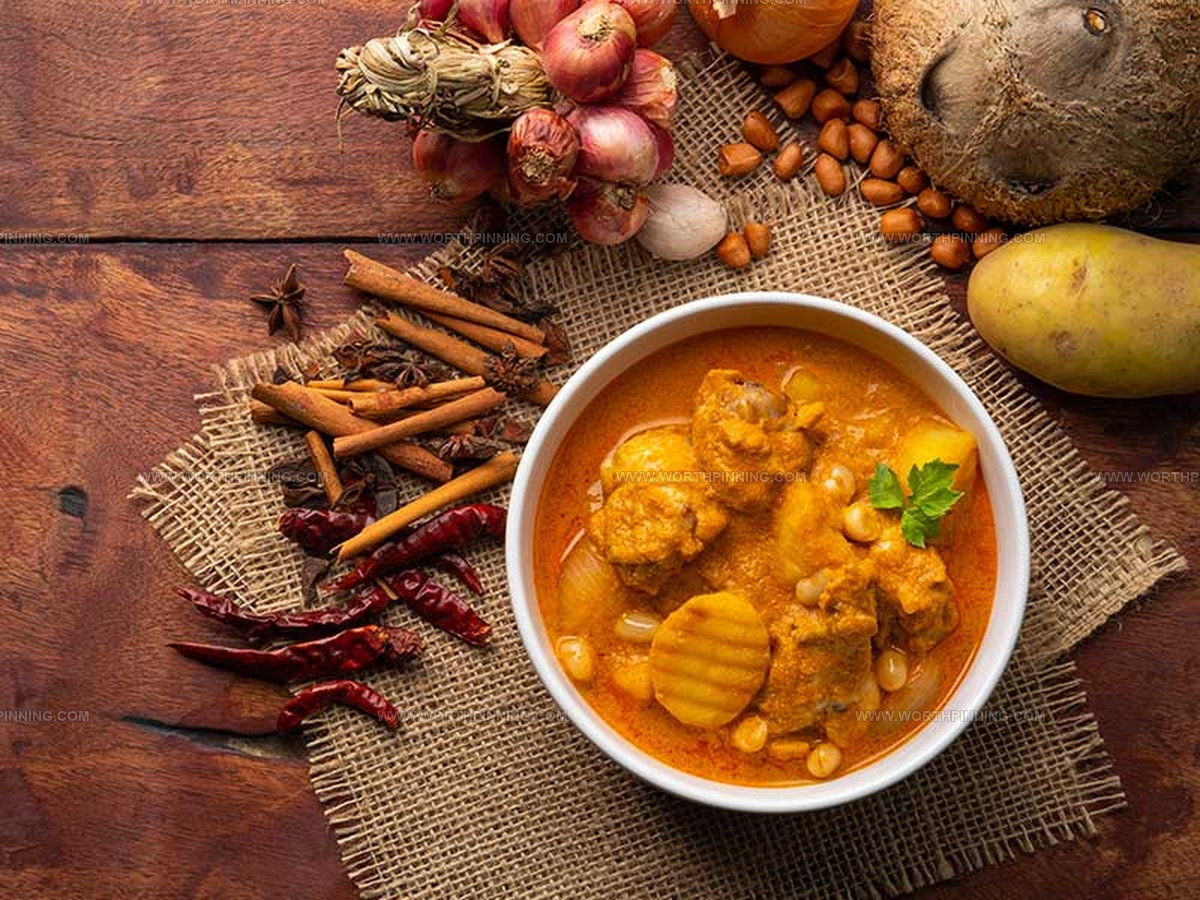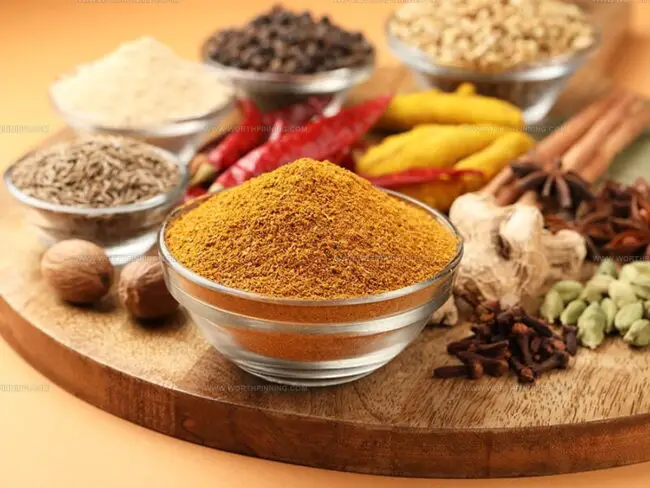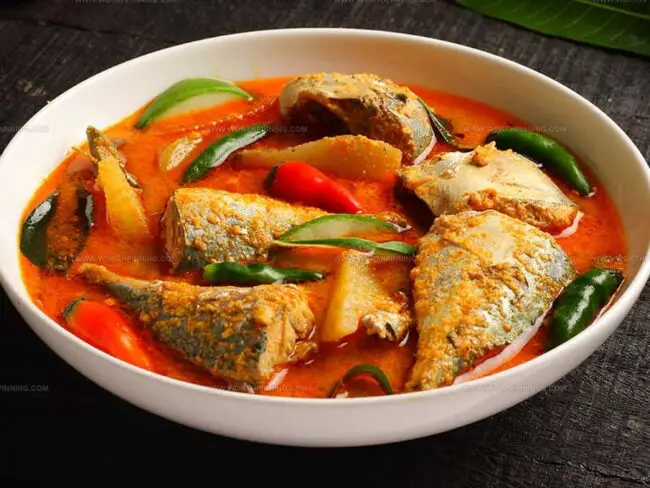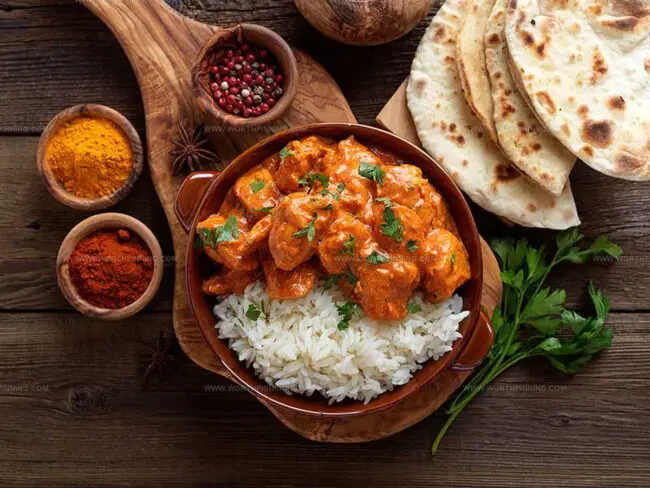What Does The Curry Taste Like? A Flavorful Journey Awaits
Curry, a beloved dish with roots in South Asian cuisine, has captured the hearts of food enthusiasts worldwide.
Its complex blend of spices and aromatics creates a culinary experience that goes beyond mere flavor.
Passionate home cooks and restaurant-goers alike often wonder about the unique characteristics that make curry so special.
The depth and richness of this dish can vary dramatically depending on regional traditions and individual recipes.
Each curry tells a story of cultural heritage, combining carefully selected ingredients that dance together in a harmonious symphony.
Spice levels, ingredient combinations, and cooking techniques contribute to the remarkable diversity of curry's flavor profile.
Understanding the nuanced world of curry promises an exciting gastronomic journey that will tantalize your taste buds and expand your culinary horizons.
Intro to Curry and Its Name
Before learning what curry tastes like, it’s interesting to know a bit about where it comes from. Curry has a long history and is actually a sauce or soup made with a mix of spices like ginger, turmeric, chili, and pepper.
It’s usually cooked with meat, poultry, seafood, or even vegetables, and some recipes also include tomato sauce, coconut milk, or regular milk. While most people connect curry with India, archaeologists have found that black pepper was used in Indian cooking as far back as 2000 BC, and later on, ginger and turmeric became common too.
After the Portuguese set up a trading center in India in 1510, new ingredients like chilies, tomatoes, and potatoes were brought in and became part of classic Indian curry. The British came up with the name “curry,” inspired by the Tamil word “kari,” which means sauce or to eat rice with sauce.
How Curry Tastes Explained
Curry is known for its bold, spicy, and memorable taste, thanks to the mix of many fragrant spices. The flavor of curry is a blend of sweet and savory notes, coming from different herbs, flowers, and spices.
Turmeric gives curry its classic yellow color and adds a mild spice with a bit of bitterness. Sweetness and a nice aroma come from cinnamon, cloves, cardamom, and certain leaves, while dried chili, cumin, ginger, and bay leaf bring warmth and a gentle kick.
These ingredients together create a slightly bitter and strong scent. Indian curries can use up to 30 different spices, making each recipe taste unique, while European curries are usually less spicy.
The overall taste of curry really depends on what spices go into the mix.
Surprising Curry Types You May Not Know
Curry may have started in India, but now it’s enjoyed all over the world, and each country has its own unique take on it:
Each region puts its own spin on curry, so every place you try it, the flavors and style will be a little different, letting you experience local cooking traditions with every bite.
How Ingredients Change Curry Flavor
The taste of curry changes depending on where it’s made, the local weather, the land, and what ingredients are easy to find. Even though curries from places like India, Japan, or Thailand might taste different, they all still share some key ingredients that give curry its classic flavor.
Curry Base Ingredients
Curry mixes often start with a special combo of spices like turmeric, ginger, cumin, and coriander. This mix brings out a spicy flavor and nice smell.
Each curry blend can taste different based on its ingredients.
Stores sell many types of curry spices with unique looks and flavors.
Picking the right curry takes some careful thought. More details about curry selection appear in the next section.
Curry Paste
Spice pastes serve as rich blends crafted from fresh ingredients such as turmeric, lemongrass, ginger, and onion. Freshly ground spices pack more flavor compared to their dried counterparts.
Cooking traditions across Southeast Asia frequently feature these robust pastes. Chefs combine ingredients to create dense, smooth mixtures. Cooks can warm these pastes with oil or butter, then stir in coconut milk to develop smooth sauces or hearty soups.
Curry Powder
Curry powder provides a tasty option for people who want spice without hassle. Spice blends from dried ingredients match curry paste in many ways. People use this powder to create curry dishes. Small packets often hold these ground spices.
Storing powdered curry becomes super easy at home. Packages can sit on shelves for several years without going bad. Powder mixes include similar ingredients to other curry styles. Shoppers also appreciate lower prices compared to fresh versions.
Cooks sprinkle curry powder across many meal types. Soups, fried plates, meat sauces, and stews welcome this spice blend. Eating dishes with fresh powder helps people enjoy maximum flavor. Spice lovers appreciate how quickly they can add rich taste to different meals.
Curry Roux Cube
Curry roux cubes offer another way to enjoy curry outside traditional Indian recipes. People connect these cubes more with Japanese cooking styles.
Block-shaped curry roux works similar to bouillon cubes. S&B Foods first introduced these special seasoning blocks in 1956. Workers make them by mixing fat, flour, and standard curry spices.
Different from curry pastes or powders, these cubes carry deeper flavor profiles. Mild sweetness and strong umami notes make them special. Stores sell them looking like thick chocolate bars split into small serving sections. Cooks can use these cubes to speed up stewed curry preparation.
Curry Spices
Curry dishes shine through their unique spice blends. Spice quality and selection change each curry's taste profile.
Here's what makes every curry special:
Matching spices carefully helps you craft delicious curry experiences. Learning about spice variations will help you master curry cooking.
Kinds Of Spices Used
Spices like cumin, pepper, coriander, and fenugreek often show up in home cooking. These ingredients carry a gentle smell that people recognize from many meals.
Real curry stands out with its deep and powerful taste. Chefs create this special flavor by mixing star anise, cloves, cardamom, and other carefully selected spices. Small changes to the ingredients can quickly shift the curry's overall character.
How Much Spice To Add
Curry's flavor changes based on how many ingredients you mix in. Getting seasoning just right matters when making any good meal.
Surprisingly, most curry recipes call for over 20 different spices.
You can play around and have fun while cooking curry.
Start by adding small amounts of seasoning - maybe 1 or 2 tablespoons - and keep tasting until it feels perfect for you.
Suggestions point to keeping mild spices like coriander, cumin, cinnamon, and pepper mostly untouched so you protect the curry's core taste.
Fats
Fat plays a key role in curry beyond just spices. Adding fat while cooking helps boost flavor and smell.
Some fat choices include:
Acidic Ingredients
Curry's tangy kick comes from its acidic mix. You can include tomato, lemon, tamarind, or yogurt based on what you enjoy.
People in Asia prefer sharp sour notes from tamarind and lemon. European tastes lean toward balanced sweet-sour combinations, often using tomatoes or yogurt.
Proteins
Proteins work well with curry dishes. Beef, pork, chicken, and duck are meat options people often choose.
These ingredients mix easily with curry and show up in many recipes.
Vegetarian options include peas, tofu, and chickpeas.
Regional curry styles also bring unique protein choices. Some cooks use goat, lamb, or seafood like fish, shrimp, and clams to create different flavor profiles.
Side Dishes To Serve With
Curry brings out unique flavors in different cultures through its side dishes. Local recipes show how each region picks perfect food partners.
Vegetarian curry offers many delicious options. Tasty ingredients include:
Bread makes an excellent curry companion.
People enjoy eating curry with:
Spicy lovers can enhance curry flavors with samosas. These small pastries use buffalo butter and refined maida flour.
Chutney provides extra taste - tomato or chili sauces work best for adding excitement to your meal.
Health Boosts From Using Curry
Curry isn’t just tasty, it’s also good for you thanks to all the healthy spices it contains. The blend of spices in curry powder is packed with nutrients and anti-inflammatory benefits.
Eating curry spices may help lower inflammation, support your heart, manage blood sugar, and provide other health perks.
Keeps Blood Sugar Steady
People who eat curry daily show lower blood sugar compared to those avoiding this spice mix. Medical studies point to interesting health benefits from regular curry consumption.
Scientists discovered curry helps improve blood movement through the body. Antioxidants inside curry work to support better circulation.
This makes curry helpful for people worried about blood vessel health.
Aids Digestion
Curry powder's advantages stem from its component spices. Turmeric's curcumin supports healthy digestion and eases problems with stomach discomfort.
Curry leaves boost digestive processes by encouraging enzyme production. Doctors often recommend them for managing nausea and stopping vomiting.
May Lower Cancer Risk
Research shows turmeric provides multiple health advantages. Scientists point to its positive impact on specific cancer cells.
Common curry dishes typically include significant turmeric amounts.
Consuming curry might help prevent cancer risks.
Turmeric works to stop cancer cell growth and movement inside your body. Garlic contains allicin compounds that support immune system strength against serious health problems like cancer.
Multiple population studies suggest people who regularly eat raw or cooked garlic experience reduced chances of developing colon, stomach, and esophageal cancer. While results are not completely definitive, evidence indicates potential protective benefits.
Easy Tips for Indian Curry Cooking
You can make curry in so many ways to match your own style. Want to cook like a pro?
Try these simple tips and make any type of curry, not just Indian. Adjust the recipe to fit what you like, and you’ll always get tasty results.
Cooking Tips
Cooking curry doesn't need to stress you out. Here are simple steps to help new cooks make this delicious meal without worry:
Marinate With Spices For Hours
Spicy Indian curry needs meat and veggies to soak up rich flavors completely. Cooks can whip up special spice mixes themselves or buy pre-made packets.
Letting ingredients sit in seasoning for 2-4 hours or through the night in cold storage helps develop deep, mouth-watering tastes.
Add Coconut Milk Or Other Milks
Switch up your liquid base with coconut water, coconut milk, regular milk, or butter. You can whip up a deliciously creamy broth with more depth and flavor.
Always Cook Slowly On Low Heat
Curry takes patience to make right. Slow cooking lets ingredients blend together smoothly and become tender and rich.
Ways To Fix Issues
Mistakes happen when cooking curry, and results can look or taste off. Follow these helpful tips to rescue your meal.
Make Curry Sauce Thicker
People can blend cornstarch, tapioca starch, or galangal with cold water or curry sauce. Mixing these ingredients helps create a smooth blend.
Stirred into the pot, the sauce becomes thicker and more appealing.
How To Keep Curry Fresh
Keeping fresh curry takes some careful steps. Storing curry in your fridge works best when you plan to eat it soon.
People want to save their curry's special taste, so refrigeration should happen quickly. Cooks recommend keeping curry for just a short time - no more than three days.
Quick storage helps protect all the delicious spices and ingredients from losing their rich flavor.
Burnt Curry
Curry recipes might seem tricky, but they are actually simple to make. Success depends on careful cooking. Quick movements and lack of attention can quickly ruin this tasty meal.
Solving burnt curry problems is easier than you think. Peeled potatoes work like magic in the curry pot. Letting potatoes simmer for around 45 minutes helps them soak up burnt flavors and unwanted smells.
Heat control matters a lot when cooking curry. Use medium or low settings for best results. Another helpful trick involves adding dairy products like cream, yogurt, or condensed milk. Such ingredients help hide burnt notes and make curry more enjoyable.
Chefs use these methods for different curry styles, including Japanese and Thai versions. These tips work across many similar dishes and help home cooks improve their skills.
Curry Dishes to Try at Home
A lot of people believe making curry is hard and takes too much time, but it’s actually pretty simple. With these easy recipes, you can enjoy tasty curry at home without any stress.
Homemade Chicken Curry Recipe
Chicken curry brings joy with its homemade charm and delightful taste. Spicy notes blend perfectly with marinated potatoes, chicken, and carrots swimming in a sweet soup, creating an irresistible dish.
Fresh chicken needs careful selection. Look for light yellow meat with thin skin.
Pressing the meat should reveal high elasticity. Ideal chicken appears fresh without odd smells.
Skin must show no bruises or blood spots.
Curry spices come in two options: store-bought or homemade.
Marinate chicken for 1-2 hours using salt, sugar, monosodium glutamate, and lemongrass. Stir-fry with a little oil to enhance meat flavor.
Each slice becomes more delicious and packed with taste.
Weekend cooking offers a chance to share this simple chicken curry with loved ones.
Thai Shrimp Curry
Finding Thai-style shrimp curry ingredients proves simple for home cooks. Thai curry connects closely with tropical cooking, unlike Indian curry styles.
Coconut milk brings a smooth base to these dishes. Thai curries skip milk fat and focus on plant-based flavors.
Cooks prefer balanced tastes that mix sweet, fatty, and spicy notes. Lemon leaves and coriander add special scents to their unique recipes.
Seafood makes Thai curry recipes special. Shrimp or fish curries differ from meat-based versions.
Strong curry spices cover up any fishy smells, creating a delicious meal everyone can enjoy.
Chana Masala
Masala word signals spice. Spice blend comes from Punjab region in Northern India.
Garam Masala typically includes:
Masala works well with chicken or beef. Cooks process it before adding to curry pot, which creates classic Indian curry taste.
Key ingredients for this dish include:
People who do not eat meat can swap ingredients with:
Chana Masala curry ranks as popular vegetarian meal in India. People enjoy serving it with:
Coconut Lentil Curry (Vegan)
Coconut lentil curry stands out as a fantastic vegetarian option. Creamy coconut milk, warm curry spices, and hearty lentils combine for a delightful meal.
Lentils pack powerful health benefits for vegetarians seeking protein alternatives. These small legumes support heart health, brain function, and blood wellness.
Women can also appreciate their potential to reduce pregnancy-related birth defects.
Cooking techniques matter when preparing curry broth.
Coconut milk works best when added near the end of cooking. Adding it too early can break down the milk, resulting in a mushy texture that lacks the desired smoothness.
Curry Flavor and FAQ Guide
1. Can curry be mild or is it always spicy?
Curry isn’t always hot! The level of spiciness depends on the country and recipe. Indian and Thai curries are often quite spicy, while Japanese and Malay curries tend to be milder and easier for everyone to enjoy.
2. Why is curry usually yellow?
That beautiful golden color comes mostly from turmeric. Turmeric has a natural pigment called curcumin, which gives many curries their classic yellow shade.
3. What can I do if the smell of curry lingers in my kitchen?
If the aroma sticks around after cooking, open your windows if you can. You can also spray a mix of vinegar and water, or rub lemon juice on your hands and kitchen surfaces to help remove stubborn smells. Simmering water with flower petals or a bit of essential oil can also make your kitchen smell fresh again.
4. Are there good ready-made curry pastes to buy?
Yes! If you want a shortcut, look for popular brands like Kitchens of India or Patak’s for Indian flavors. For Thai curries, try Mae Ploy, Maesri, or Thai Kitchen. If you like a gentle, less spicy curry, Japanese brands like S&B and House Foods are great options.
5. Is curry okay for kids to eat?
Many curries are too strong or spicy for young children, but you can always make a milder version at home. Use less chili and go easy on strong spices like ginger and turmeric to make a gentle curry the whole family can enjoy.
6. Can curry be used for more than just rice dishes?
Absolutely! Curry goes well with noodles, breads like naan, roasted veggies, or even as a soup base. It’s a very flexible dish that works with many foods.
7. Does curry have any health benefits?
Yes, curry can be good for you! Many spices used in curry, like turmeric, garlic, and ginger, are full of antioxidants and may help with inflammation.
8. How should I store leftover curry?
Let curry cool, then keep it in a sealed container in the fridge. It usually stays fresh for up to three days, and the flavors often taste even better the next day!
9. Is curry vegan or vegetarian?
Curry can be both! Many curries are made with only vegetables and plant-based ingredients. Just check the recipe to be sure, as some use meat or fish sauce.
Give Curry a Try Today
Curry started in India but now people everywhere have their own versions. This flavorful dish is loved in many parts of the world, like Asia, Europe, and South Africa.
After reading, you probably have a better idea of what makes curry special, though words can’t capture its full flavor. Feel free to leave a comment or share this article with friends.
You might find someone who’s excited to make curry with you, or you can use these recipes to cook up a delicious meal for others.






Sophia Rivera
Recipe Developer & Kitchen Tips Specialist
Expertise
Education
Austin Community College
San Antonio Culinary Institute
Sophia’s passion for baking began in her family kitchen, where she spent hours experimenting with new recipes. With a background in baking and pastry arts, she loves making desserts that are as visually stunning as they are delicious.
Sophia is all about using seasonal, locally sourced ingredients to create treats that everyone will enjoy. When she’s not creating mouth-watering desserts, you can find her gardening, making new recipes, or enjoying a relaxing afternoon with her family.